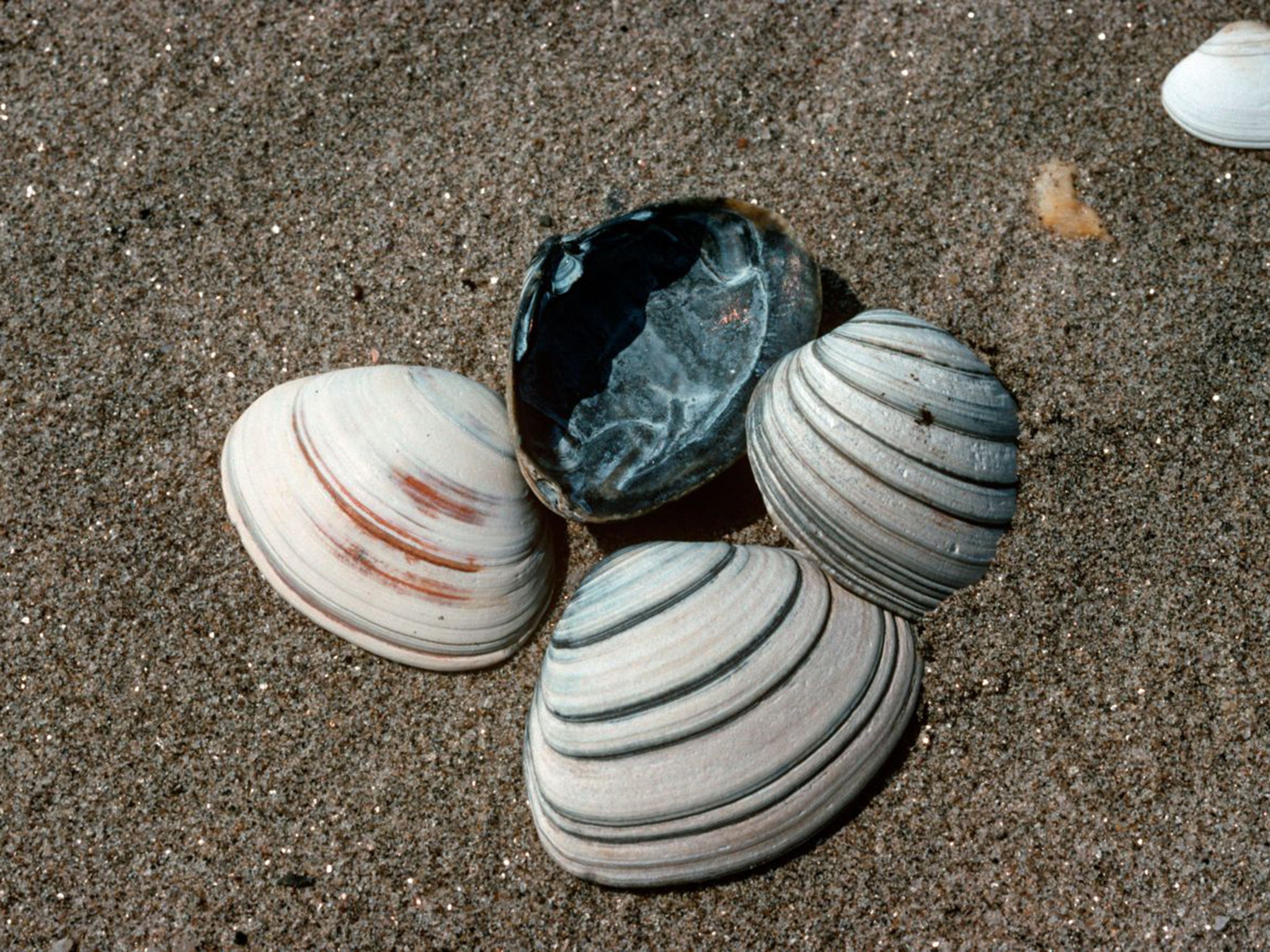Human waste blamed for turning one in 10 of Britain's male clams into females
8.6 per cent of the 3,000 tested showed signs of being 'intersexed'

Almost one in 10 male clams found around the English coast has developed feminine features, a phenomenon blamed on hormone-disrupting pollutants found in pharmaceuticals that enter the sewage system, paper-mill effluent and other waste.
Researchers, who tested more than 3,000 adult clams from locations along the English Channel coast and neighbouring areas, found that 8.6 per cent of male clams had evidence of both ovarian and testicular tissue. Six out of 10 sites had the so-called “intersexed” clams.
“The widespread and elevated occurrences… far exceed the occasional or accidental levels seen in other species,” say the researchers, from the Marine Biological Association, Plymouth and the University of Le Havre.
Clams, mussels, oysters and scallops are bivalves. They inhabit the sediment in estuaries, which acts as a long-term reservoir for pollutants. These invertebrates are at the bottom of the food chain – so the adverse effects of pollutants may have implications for other species.
The aim of the new three-year study, reported in the Marine Pollution Bulletin, was to investigate how widespread the abnormal development was. Results show that 58 per cent of sites have found intersex males.
The researchers said: “Future research should focus on the biological mechanisms of action, the causative chemicals, their relative potency and interactions.”
In other research, intersex has been used as a biological indicator of the impact of so-called endocrine-disrupting chemicals (EDCs), which interfere with the hormones that are responsible for the regulation of development and other processes.
Several studies have linked intersex, or other measures of endocrine disruption in invertebrates, to effluent from sewage works. Feminisation of male freshwater fish exposed to EDCs from sewage treatment works and other sources has been found. And hormone disruption in a range of species has been associated with agriculture,
Female masculinisation by EDCs has also been found in molluscs exposed to boats’ anti-fouling paints. In severe cases, the pollution has resulted in sterility.
Join our commenting forum
Join thought-provoking conversations, follow other Independent readers and see their replies
Comments